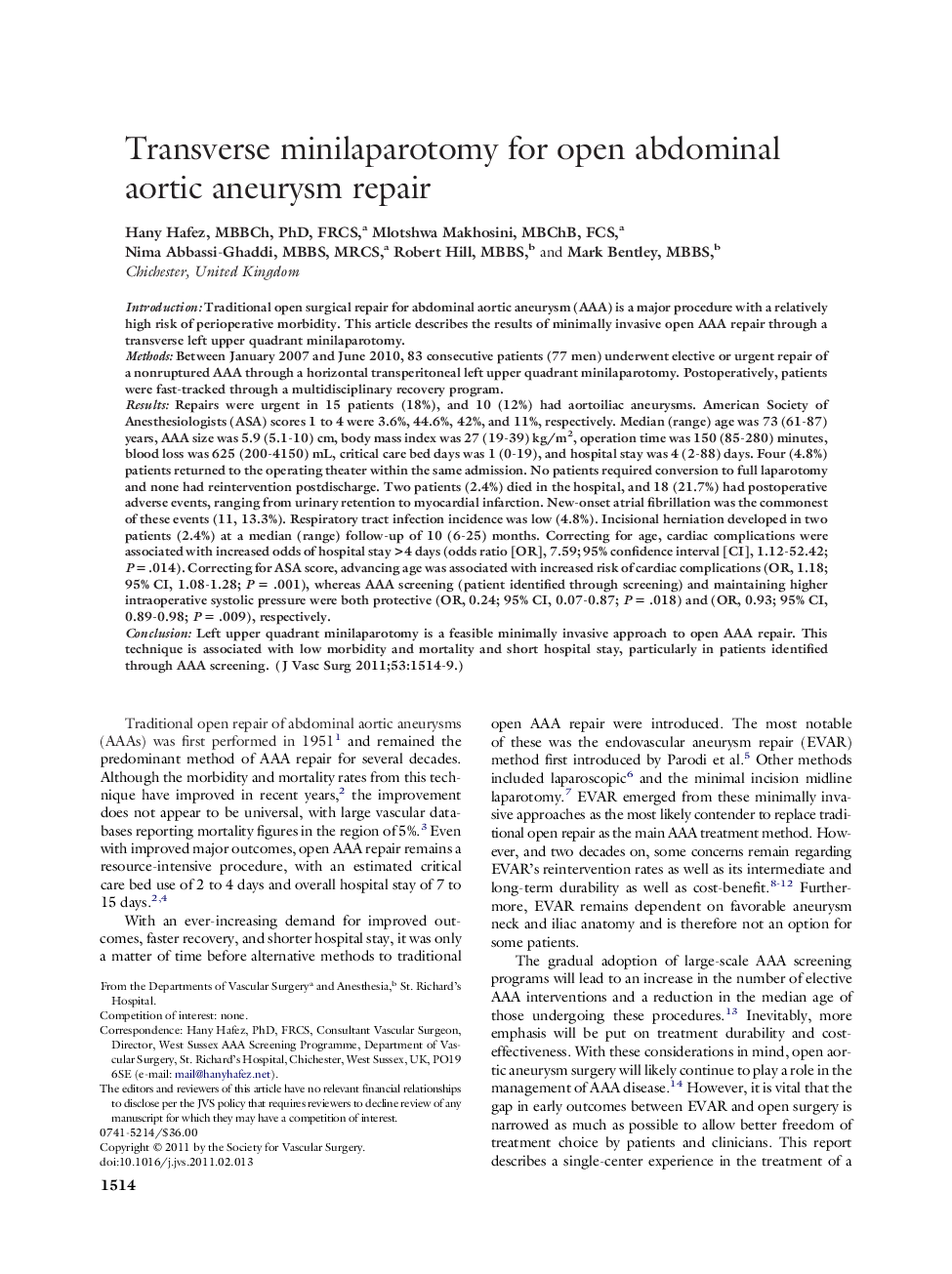| Article ID | Journal | Published Year | Pages | File Type |
|---|---|---|---|---|
| 2992650 | Journal of Vascular Surgery | 2011 | 6 Pages |
IntroductionTraditional open surgical repair for abdominal aortic aneurysm (AAA) is a major procedure with a relatively high risk of perioperative morbidity. This article describes the results of minimally invasive open AAA repair through a transverse left upper quadrant minilaparotomy.MethodsBetween January 2007 and June 2010, 83 consecutive patients (77 men) underwent elective or urgent repair of a nonruptured AAA through a horizontal transperitoneal left upper quadrant minilaparotomy. Postoperatively, patients were fast-tracked through a multidisciplinary recovery program.ResultsRepairs were urgent in 15 patients (18%), and 10 (12%) had aortoiliac aneurysms. American Society of Anesthesiologists (ASA) scores 1 to 4 were 3.6%, 44.6%, 42%, and 11%, respectively. Median (range) age was 73 (61-87) years, AAA size was 5.9 (5.1-10) cm, body mass index was 27 (19-39) kg/m2, operation time was 150 (85-280) minutes, blood loss was 625 (200-4150) mL, critical care bed days was 1 (0-19), and hospital stay was 4 (2-88) days. Four (4.8%) patients returned to the operating theater within the same admission. No patients required conversion to full laparotomy and none had reintervention postdischarge. Two patients (2.4%) died in the hospital, and 18 (21.7%) had postoperative adverse events, ranging from urinary retention to myocardial infarction. New-onset atrial fibrillation was the commonest of these events (11, 13.3%). Respiratory tract infection incidence was low (4.8%). Incisional herniation developed in two patients (2.4%) at a median (range) follow-up of 10 (6-25) months. Correcting for age, cardiac complications were associated with increased odds of hospital stay >4 days (odds ratio [OR], 7.59; 95% confidence interval [CI], 1.12-52.42; P = .014). Correcting for ASA score, advancing age was associated with increased risk of cardiac complications (OR, 1.18; 95% CI, 1.08-1.28; P = .001), whereas AAA screening (patient identified through screening) and maintaining higher intraoperative systolic pressure were both protective (OR, 0.24; 95% CI, 0.07-0.87; P = .018) and (OR, 0.93; 95% CI, 0.89-0.98; P = .009), respectively.ConclusionLeft upper quadrant minilaparotomy is a feasible minimally invasive approach to open AAA repair. This technique is associated with low morbidity and mortality and short hospital stay, particularly in patients identified through AAA screening.
